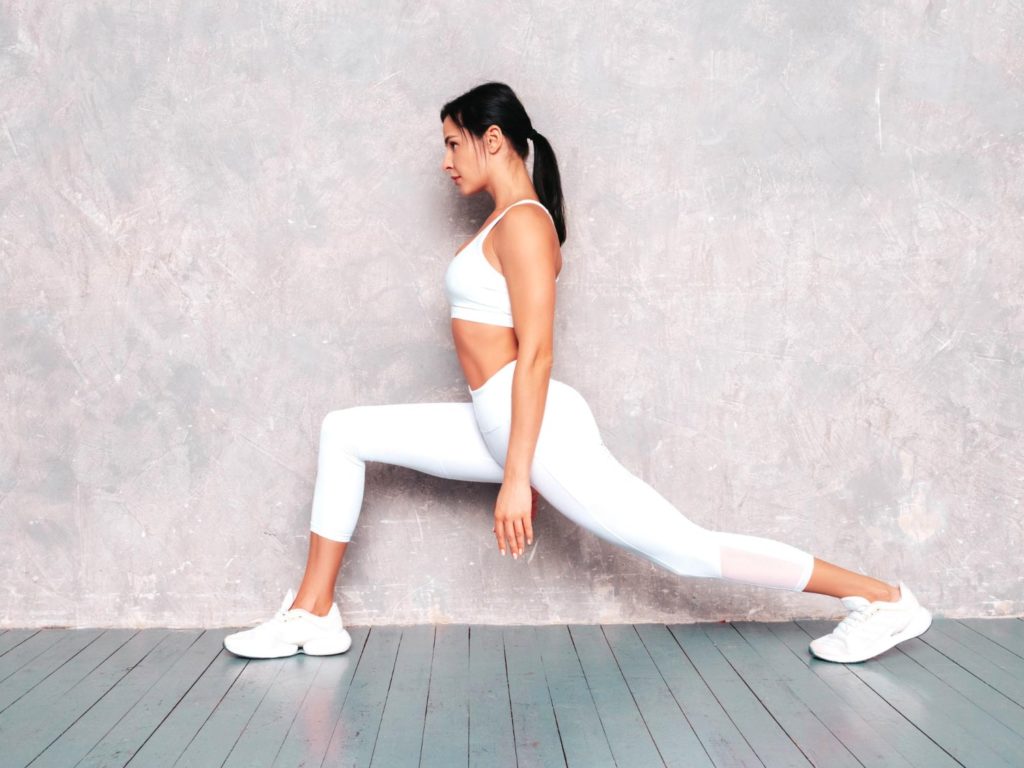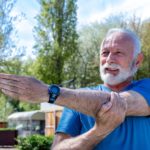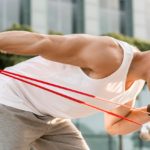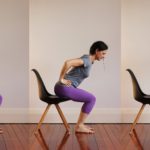
Jess Cadenhead
(MSc Clinical Exercise Physiology, PgDipSci, BSc, Registered Clinical Exercise Physiologist (ACSM, CEPNZ))
What’s special about hamstrings and why should we train them?
Muscle imbalances across the knee joint increase the risk of a hamstring injury by 17-fold and increase the risk of knee overuse injuries, especially in females.[1,2]
To add to this muscular imbalance, we have become more sedentary in our lifestyles.
Several hours of sustained sedentary behaviour leads to having shorter and tighter hamstrings. This lack of flexibility can further increase our risk of injuries.[3,4]
This is why we need to include a range of different exercises, such as:
- Good mornings (the hip hinge)
- The deadlift
- Romanian deadlift
- Glute bridge
- Nordic hamstring curl
- Leg curls
First, let’s start with understanding the anatomy and role of hamstrings in our daily movement.
The hamstrings — function and anatomy
The hamstrings are a group of muscles located in the back of our thigh, starting at the hip and inserting on the knee. The hamstrings consist of three muscles:
- Biceps femoris
- Semimembranosus
- Semitendinosus
Biceps femoris
Biceps femoris has two heads, long and short head, on the outside of the leg. Its function is to flex the knee and extend our leg at the hip, as well as externally rotating your leg when our knee is bent.
Semimembranosus
This muscle sits on the inside of our leg, and its function is to flex the knee, extend our leg at the hip and also internally rotate at the hip when the knee is bent.
Semitendinosus
Semitendinosus sits between the other two hamstring muscles. Its function is to mirror that of the semimembranosus.
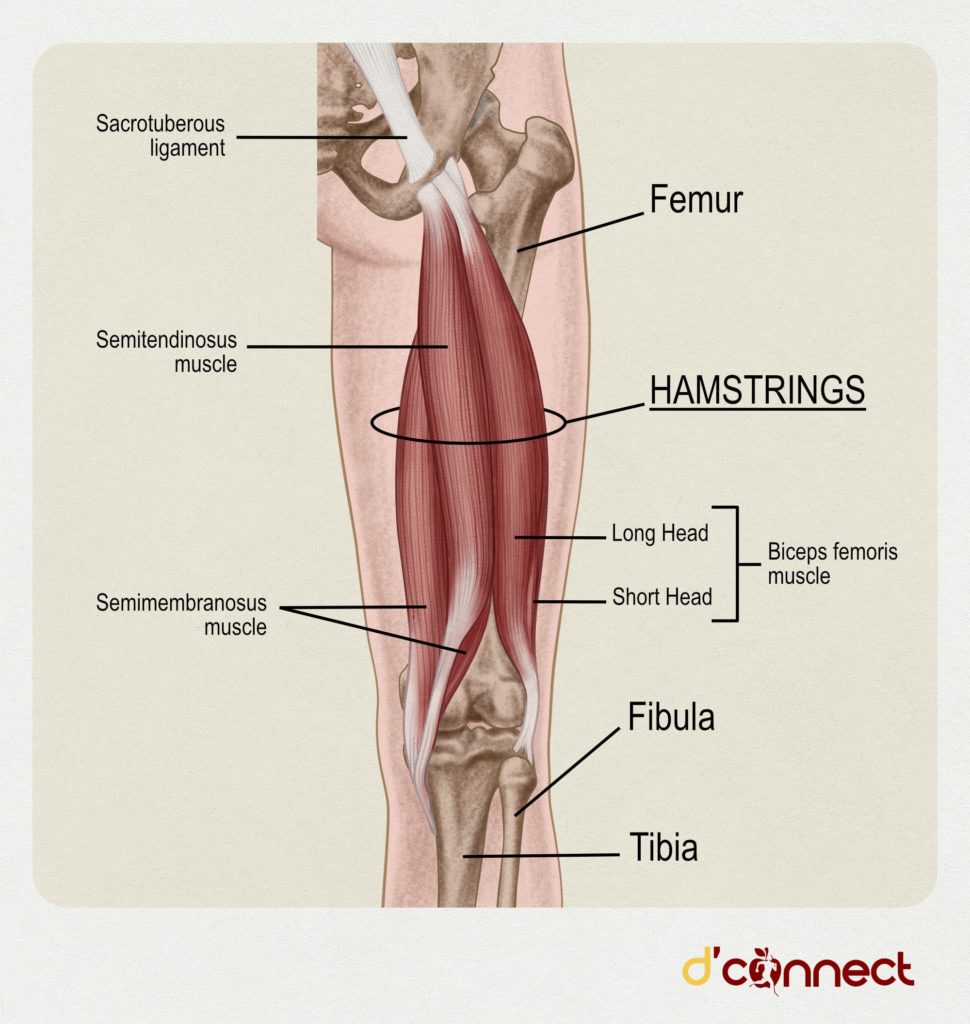
The hamstrings attach at two joints, the knee and hip. As a result they have a function in many different movements.
Hip
- Extension = moving the leg backwards from the hip
- Flexion = moving the leg forwards from the hip
- Internal rotation = rotating the leg in towards the midline of the body
- External rotation = rotating the leg out, away from the midline of the body
Knee
- Flexion = bending the leg
- Extension = straightening the leg
The hamstrings have an important function during many movements such as:
- Absorbing impact from loading and thus protecting the knee and hip joints
- Stabilising the knee joint
- Helping us to move forward while walking and running
- Bending over and climbing up stairs
As we get older, climbing up the stairs might become a real hurdle for some seniors, which makes it important to continually activate hamstrings and have a wide range of motion.
Exercises for hamstrings
The hamstrings are predominantly composed of type 2 muscle fibres which are fast twitch fibres. These fibres are needed for producing power in activities such as sprinting and jumping.
However, it is important to recognise that there is a high inter-person difference in the composition of muscle fibres. As an example, a marathon runner is most likely to have more type 1 muscle fibres (slow) in their hamstrings compared to an olympic power lifter who would have more type 2 muscle fibres (fast).
Muscles consisting with a higher percentage of type 2 muscle fibres tend to respond better to higher loads with less repetitions. This load is often given as a % of our 1 repetition maximum (1RM).
For individuals new to weight training, it is recommended to begin at 60-70% of your 1RM (e.g. 6-7/10 in effort) and perform 1-3 sets of 8-12 reps.[5]
Please note the sets and repetitions may change depending on your goal:
- muscular strength = less reps at a higher load (e.g. 1-6 repetitions max, >60% 1RM)
- muscular endurance = more reps at a lower load (e.g. 15-25 reps, 40-70% 1RM)
- muscular hypertrophy (larger muscles) = moderate reps to the point of muscular failure (e.g. 6-20 repetitions maximum at any load as long as failure has occurred)
- muscular power = less reps at a light-to-moderate load, performed as quickly as possible (e.g. 3-6 reps, 30-60% 1RM)
Good mornings (the hip hinge)
The hip hinge, a.k.a good mornings is the beginners exercise to training the hamstrings. It is a fundamental movement that we use in daily life whenever we bend over at the hip, hence the name hip hinge.
This should be executed well first before you move onto more complicated hip extension exercises like a deadlift.
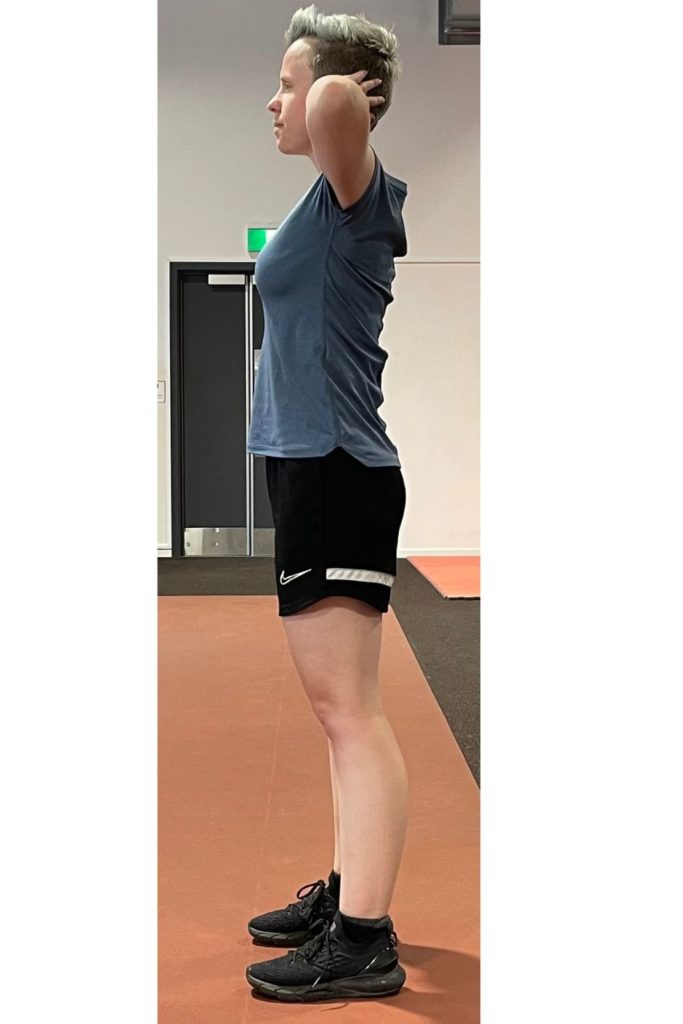
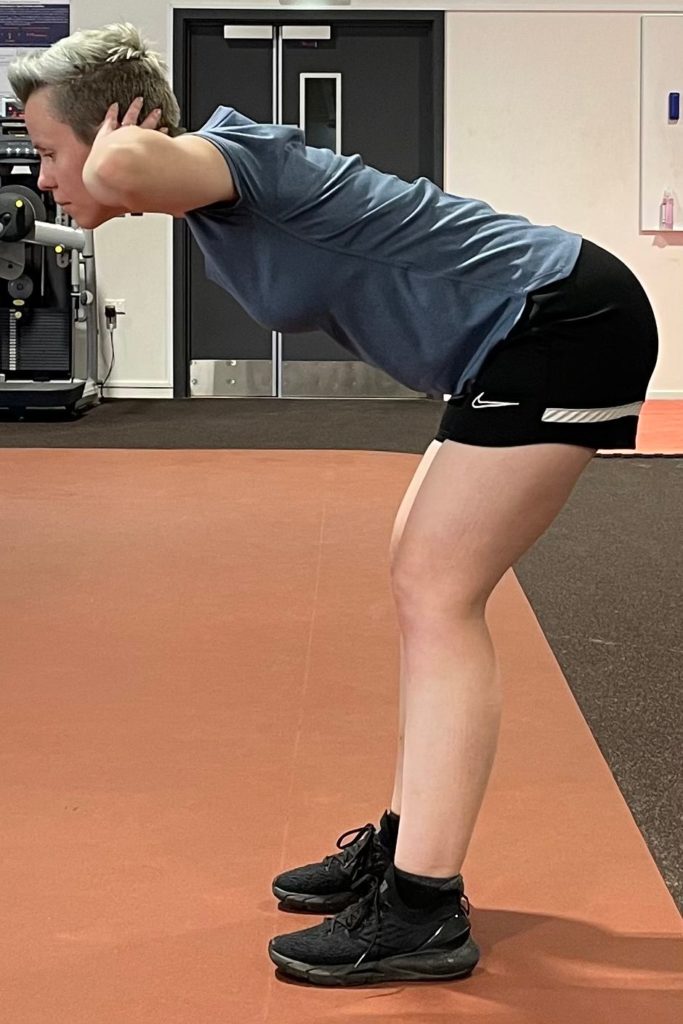
Step 1
Stand with your feet shoulder-width apart and place your hands behind your head (if possible).
Step 2
Start by bending at your hips, pushing your hips backwards and bend over until you are near to parallel. Make sure to keep a slight bend in your knee during this movement.
Step 3
Return to the starting position and repeat.
Tip — Breathe out as you bend forward, and then breathe in as you move back in the starting position.
Progression: to progress this exercise you can add a barbell across the rear of your shoulders to add a load.
The deadlift
Set up: Set up a barbell with an appropriate load (start light if this is your first time – 10-20kg). The barbell will be on the floor in front of you.
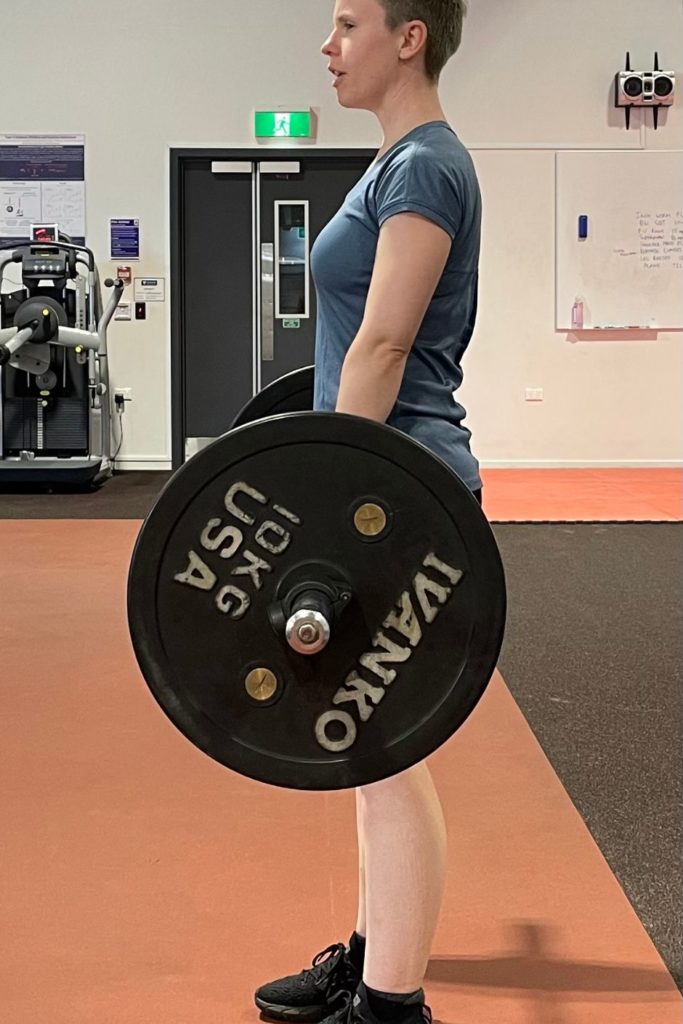

Step 1
Stand with your feet shoulder-width apart, with your mid-foot under the barbell.
Step 2
Bend at your knees (like a half-squat) and grab the bar with a shoulder-width grip (your shins should be touching the bar).
Step 3
From the bottom position, lift your chest up and straighten your lower back (it is important to keep your lower back in a neutral position to avoid injury). Once you are ready, stand up and lift the barbell along your shins.
Step 4
From the standing position then lower the weight back down to the floor, by bending at the hip and maintaining a neutral back position (do not round your back).
Tip — To maintain good posture, imagine you are squeezing lemons in your armpits (to keep your shoulders back) and that there is a poll stuck to your back (to maintain a neutral spine position).
RELATED — Bad posture can impact your health: Getting it straight
Romanian deadlift
The Romanian deadlift (RDL) is much the same as a traditional deadlift, however instead of starting by picking the weight from the floor, you begin in a standing position with the barbell.
The other difference is that in the RDL, the barbell does not travel as far. With a conventional deadlift the bar goes all the way to the floor, achieving a greater range of motion.
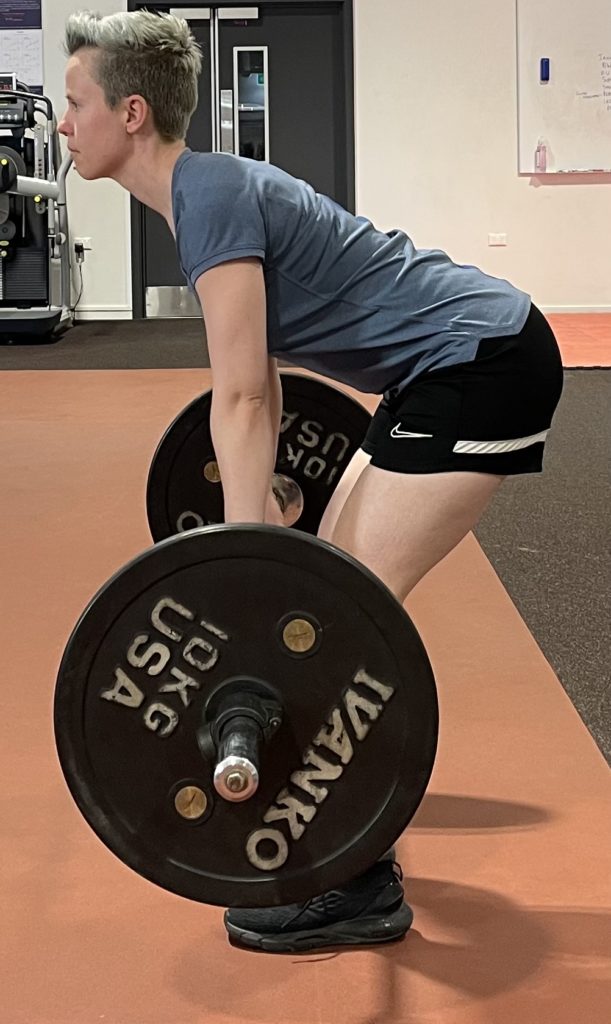
Tip — A RDL is completed with a bent knee, which is different to a stiff-legged deadlift. The stiff-legged deadlift encourages more lengthening of the hamstrings and greater work achieved by the lower back muscles.
Please note it is recommended to do a RDL over a stiff-legged deadlift if you have lower back pain or want to avoid injury.
RELATED — Relieve back pain: 5 Beginner Yoga Exercises, Stretches and Poses
Glute bridge
The glute bridge exercise primarily targets the glute muscles, however the hamstrings are still involved in performing the hip extension movement.
This exercise is great to combat the hours of sitting, as not only do our hamstrings get tight and underactive, so do our glutes.
RELATED — Exercise Guide to: Glorious Glutes
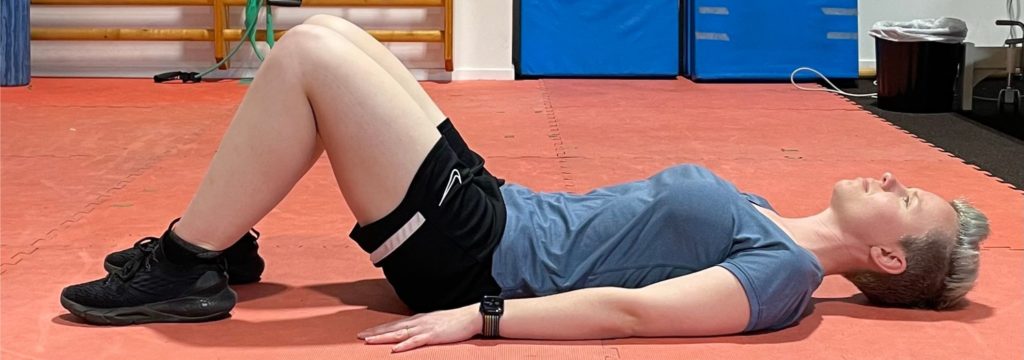

Step 1
Lay down on your back with your knees bent and your feet flat on the ground, hip width apart.
Step 2
Engage your glutes and core, and lift your hips up towards the ceiling.
Step 3
After holding for 1-2 seconds at the top, slowly lower your hips back down until just before the floor. Then repeat by lifting your hips up again.
Nordic hamstring curl
Step 1
Start on your knees with a pad or cushion underneath for knee support. Secure your ankles, either with a piece of immovable equipment (e.g. Smith machine), or have another individual brace your ankles.
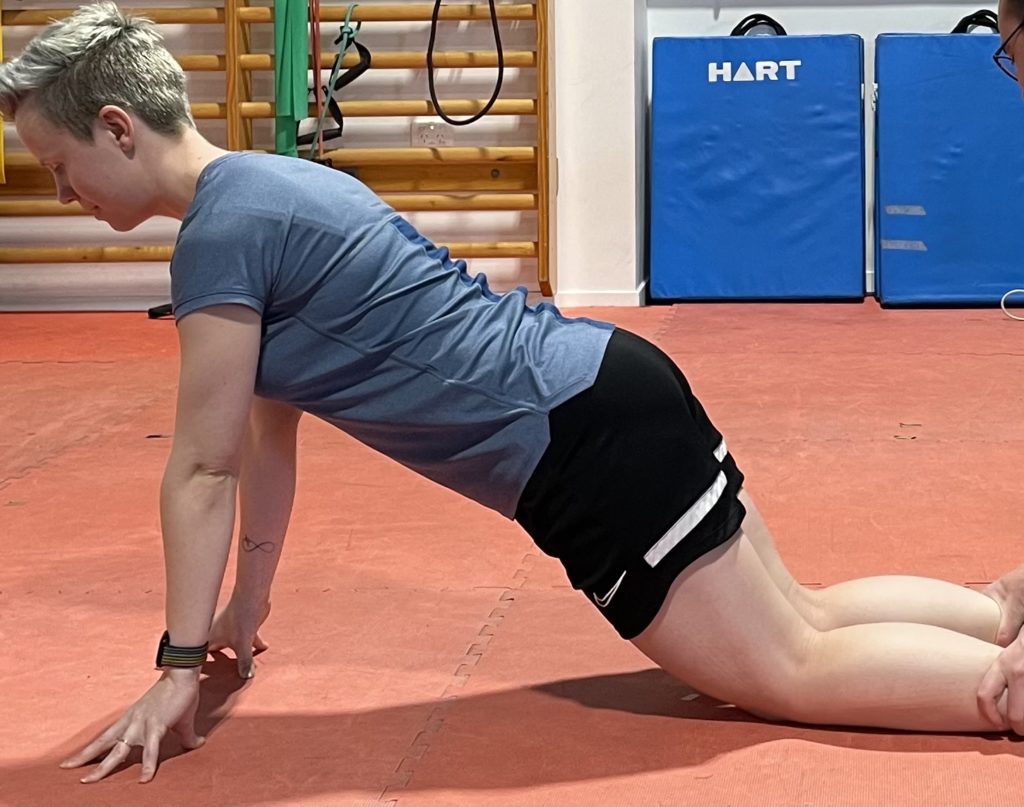
Step 2
Your feet and ankles should be in line with your knees. Place your arms across your chest, core engaged and slowly lower yourself down to the ground. Go as far as you can with your legs, before bracing with your arms.
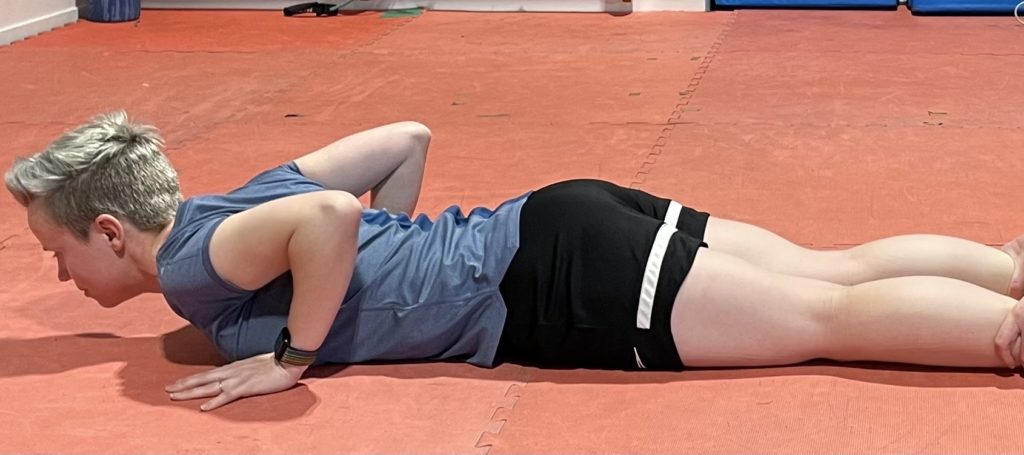
Step 3
From the ground, engage your hamstrings to pull your body back up to the starting position. Use your hands to help initiate the movement if needed.
Knee flexion (leg curl) machines
When it comes to a machine-based hamstring exercise, we have two options. These are:
- seated leg curl
- prone leg curl machines
Which one is better?
The answer is it depends on our goals. If we want to achieve muscle hypertrophy, studies have shown that seated leg curl machines achieve a greater increase in muscle volume compared to prone leg curl machines (+14% vs. +9%).[6]
However, if we have tight hamstrings and we are trying to improve flexibility and function, the prone leg curl helps mitigate tightening at the hip joint.
The prone leg curl also lengthens the hamstrings to a greater degree compared to the seated leg curl.
Seated leg curl
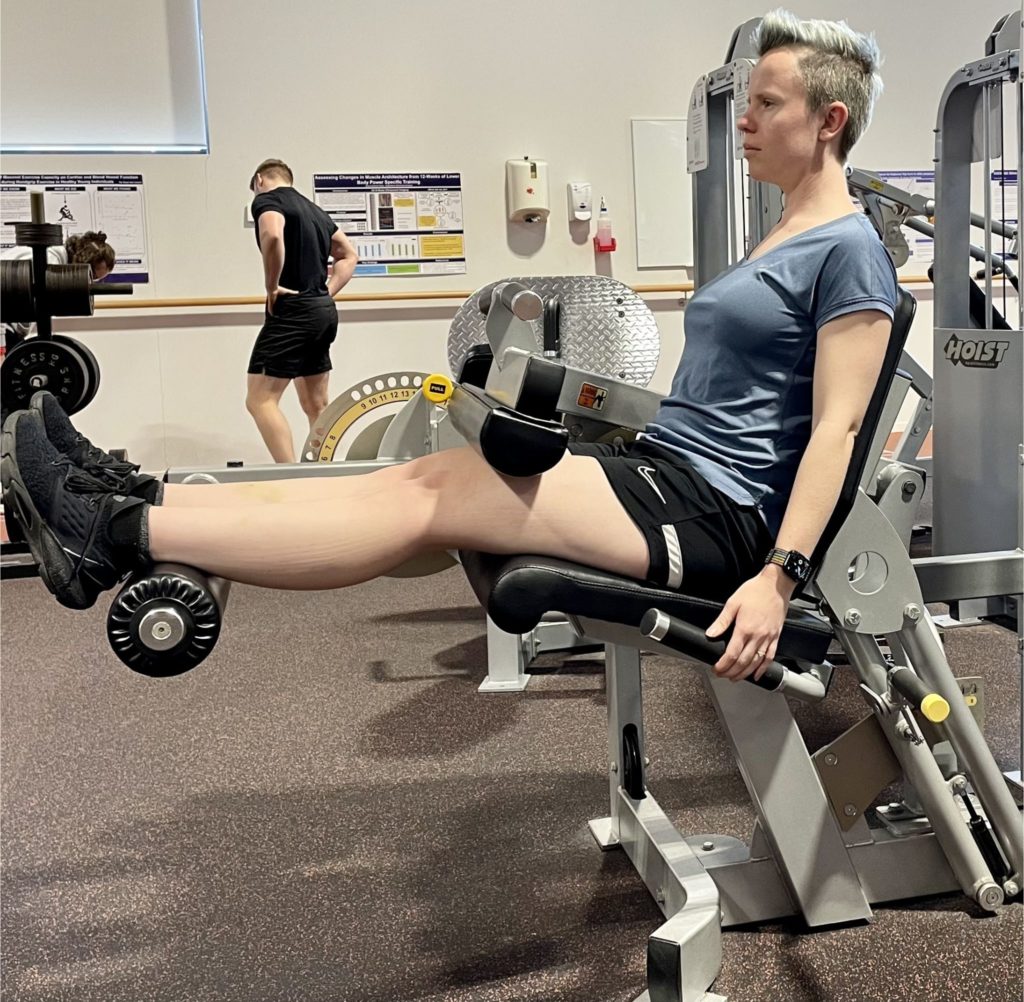
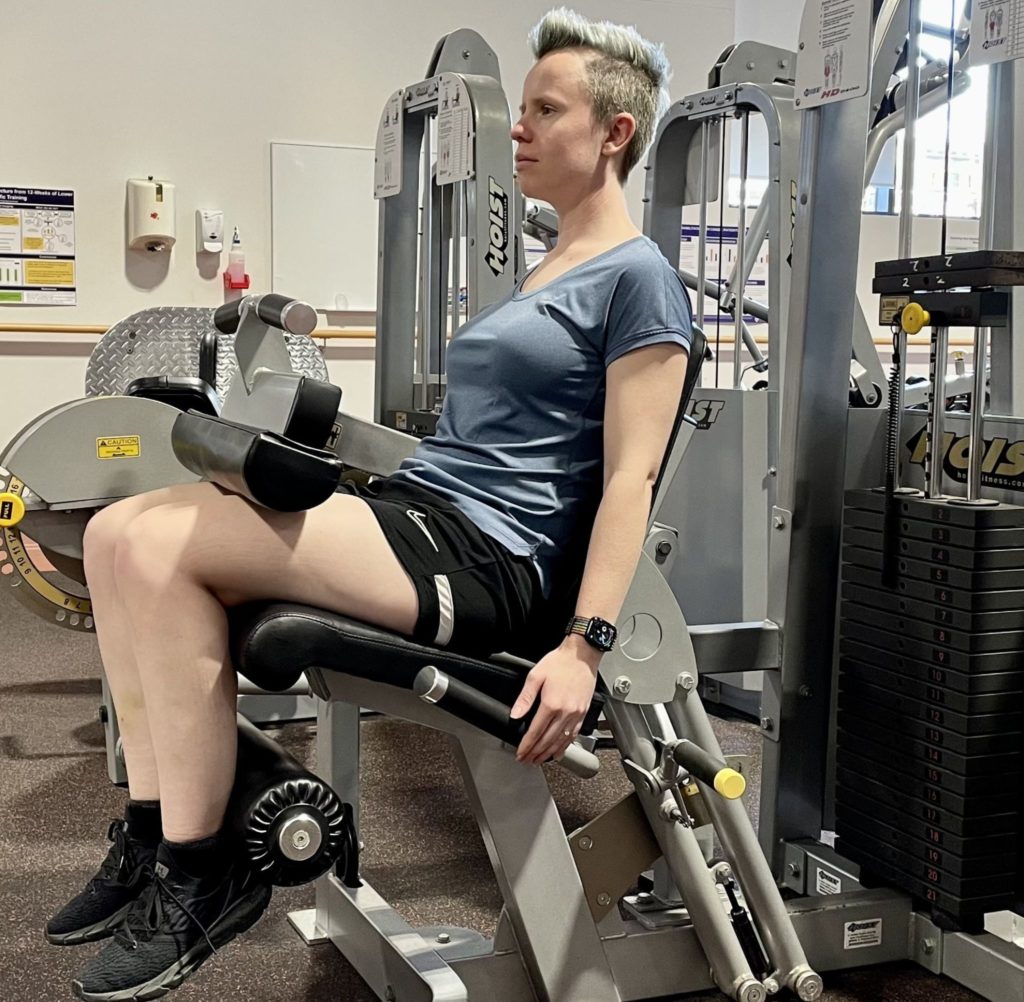
Step 1
Set up the machine so the axis of rotation is aligned with the centre of your knee joint. Usually on machines you can adjust the seat, to bring your forward or backwards.
Ideally your knee will be just past the edge of the seat. Bring the top pad down to your thighs, to fix your legs in.
Step 2
From a straight leg position, pull the pad (that should sit at the top of your heel, but not past your ankle joint) as far as you can towards your buttocks.
Step 3
Slowly return the weight back to the starting position. Without resting the weight, begin your next repetition.
Tip — Make sure to relax your feet as much as you can, as people tend to fatigue in their calf muscles before their hamstrings. Also make sure to pause for a second after step 2 before slowly bringing your legs back up.
Muscle activation during exercises for the hamstrings
The exercises shared above are only some of the exercises that activate the hamstrings. The hamstrings are involved in many different actions, however the amount of hamstring activation changes in each exercise.
Below we can see the muscle activation of the biceps femoris, measured with electromyography (EMG) during 10 different lower body exercises.[7]
EMG measures the electrical activity of the muscles response during an exercise. EMG was measured in both the concentric, (where the muscle is shortening), and the eccentric (where the muscle is lengthening) portion of each exercise.
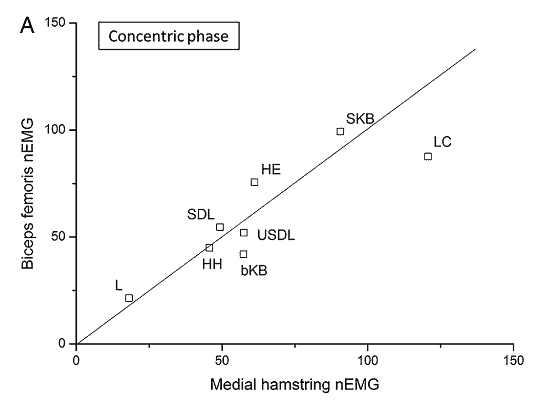
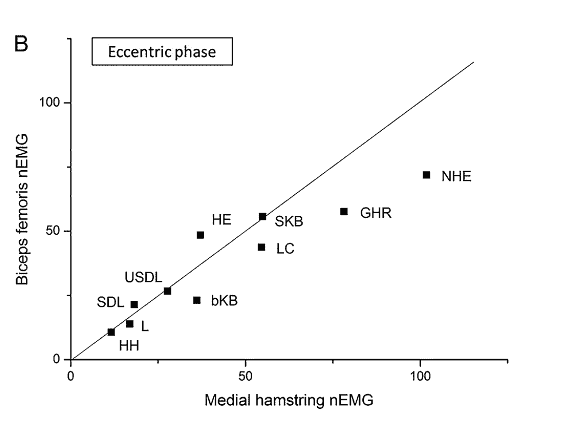
Biceps femoris (BF) to medial hamstring (MH) nEMG relationship for the (A) concentric and (B) eccentric phases of each exercise.
Exercises to the left of and above the 45° line exhibited
higher levels of BF than MH nEMG, and exercises to the right and below the line displayed higher levels of MH than BF nEMG.
bKB, unilateral bent-knee bridge; GHR, glute-ham raise; HE, 45° hip extension; HH, hip hinge; L, lunge; LC, leg curl; nEMG, normalised electromyography; NHE, Nordic hamstring exercise; SDL, bilateral stiff-leg deadlift; SKB, unilateral straight knee bridge; USDL, unilateral stiff-leg deadlift
This suggests that rotating exercises often might provide the best stress on the muscle to activate growth.
Related Questions
1. How often should I train my hamstrings?
It is recommended to perform resistance training for hamstrings (and any major muscle group) at least 2 times per week.
When looking at volume per muscle group, there is a dose-response relationship with muscular strength and hypertrophy.
If you are new to resistance training or have a lack of time, research does show that just <4 sets per muscle group per week will still achieve improvements in muscular fitness.[8]
2. Do squats and lunges target the hamstrings?
Yes, they do.
However, exercises such as deadlifts, leg curls, Nordic hamstring curls and glute bridges activate the hamstring muscles to a greater degree.[7]
3. How can I exercise my hamstrings at home?
Exercises that are easy to do at home are good mornings and glute bridge.
Then, by adding in exercises like squats and lunges you will involve the hamstrings in a more functional exercise.
If you have just started working out, and have questions about hamstring exercises, or exercising in general, feel free to let us know in the comments below.
Jess has always been passionate about health and well-being, and for many years now has been helping individuals with chronic conditions on how to use exercise as medicine. Jess is a registered Clinical Exercise Physiologist (ACSM and CEPNZ), where she specialises in providing evidence-based exercise rehabilitation.
Jess is highly passionate about promoting exercise physiology and prescription to different populations, especially those with conditions such as cardiovascular disease, cancer, Parkinson’s and Chronic Fatigue Syndrome.
She has worked in various community roles in the past and has helped develop different community based exercise programmes for Falls Prevention and helped design suitable assessments for those suffering from Post Concussion Syndrome.
Currently, Jess is a Professional Teaching Fellow in the Department of Exercise Sciences at the University of Auckland. She specialises in coordinating and teaching the postgraduate Clinical Exercise Physiology programme.
When Jess is not at work she will most likely be on the football pitch, or at the dog park with her dog, Raven.
You can find Jess at The Health and Rehabilitation Clinic at the University of Auckland.
References
(1) Yeung, S. S., Suen, A. M., & Yeung, E. W. (2009). A prospective cohort study of hamstring injuries in competitive sprinters: preseason muscle imbalance as a possible risk factor. British journal of sports medicine, 43(8), 589-594.
(2) Devan, M. R., Pescatello, L. S., Faghri, P., & Anderson, J. (2004). A prospective study of overuse knee injuries among female athletes with muscle imbalances and structural abnormalities. Journal of athletic training, 39(3), 263. Retrieved from https://www.ncbi.nlm.nih.gov/pmc/articles/PMC522150/
(3) Fousekis, K., Tsepis, E., Poulmedis, P., Athanasopoulos, S., & Vagenas, G. (2011). Intrinsic risk factors of non-contact quadriceps and hamstring strains in soccer: a prospective study of 100 professional players. British journal of sports medicine, 45(9), 709-714.
(4) Watsford, M. L., Murphy, A. J., McLachlan, K. A., Bryant, A. L., Cameron, M. L., Crossley, K. M., & Makdissi, M. (2010). A prospective study of the relationship between lower body stiffness and hamstring injury in professional Australian rules footballers. The American journal of sports medicine, 38(10), 2058-2064.
(5) American College of Sports Medicine. (2021). ACSM’s guidelines for exercise testing and prescription. Lippincott Williams & Wilkins.
(6) Maeo, S., Huang, M., Wu, Y., Sakurai, H., Kusagawa, Y., Sugiyama, T., … & Isaka, T. (2021). Greater hamstrings muscle hypertrophy, but similar damage protection after training at long versus short muscle lengths. Medicine and science in sports and exercise, 53(4), 825. Retrieved from https://www.ncbi.nlm.nih.gov/pmc/articles/PMC7969179/
(7) Bourne, M. N., Williams, M. D., Opar, D. A., Al Najjar, A., Kerr, G. K., & Shield, A. J. (2017). Impact of exercise selection on hamstring muscle activation. British journal of sports medicine, 51(13), 1021-1028.
(8) Schoenfeld, B. J., Ogborn, D., & Krieger, J. W. (2016). Effects of resistance training frequency on measures of muscle hypertrophy: a systematic review and meta-analysis. Sports medicine, 46(11), 1689-1697.

